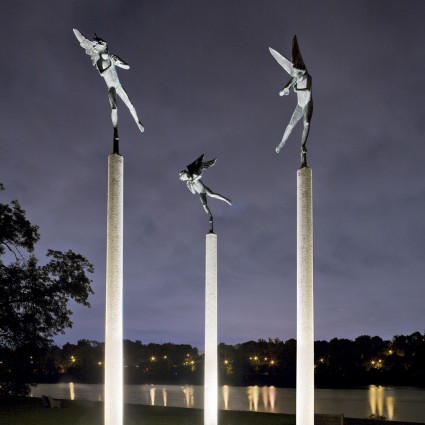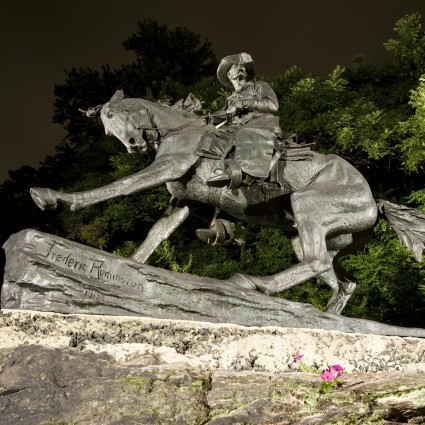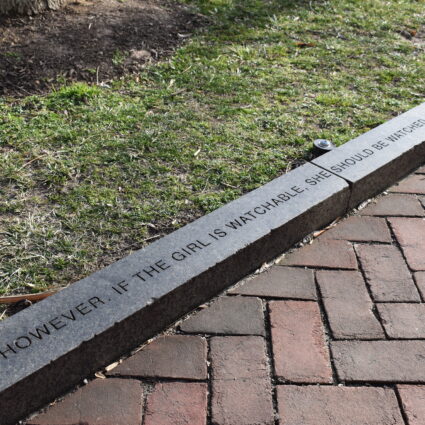At A Glance
A site-specific literary and visual collaboration by poet Stephen Berg and artist Tom Chimes
The 1,125′ line of poetry is painted without punctuation like “a long breath of speech” on top of the retaining wall along the Schuylkill River
Letterforms appear and disappear depending upon the variable light and the angle of the observer
The text reflects themes of grief, nature, and the transformation of life
Poet Stephen Berg and visual artist Tom Chimes describe Sleeping Woman as a “choral voice rising out of the site.” The collaborative work was created specifically for this location and was commissioned in 1989 by the Fairmount Park Art Association (now the Association for Public Art) with support from The Pew Charitable Trusts.
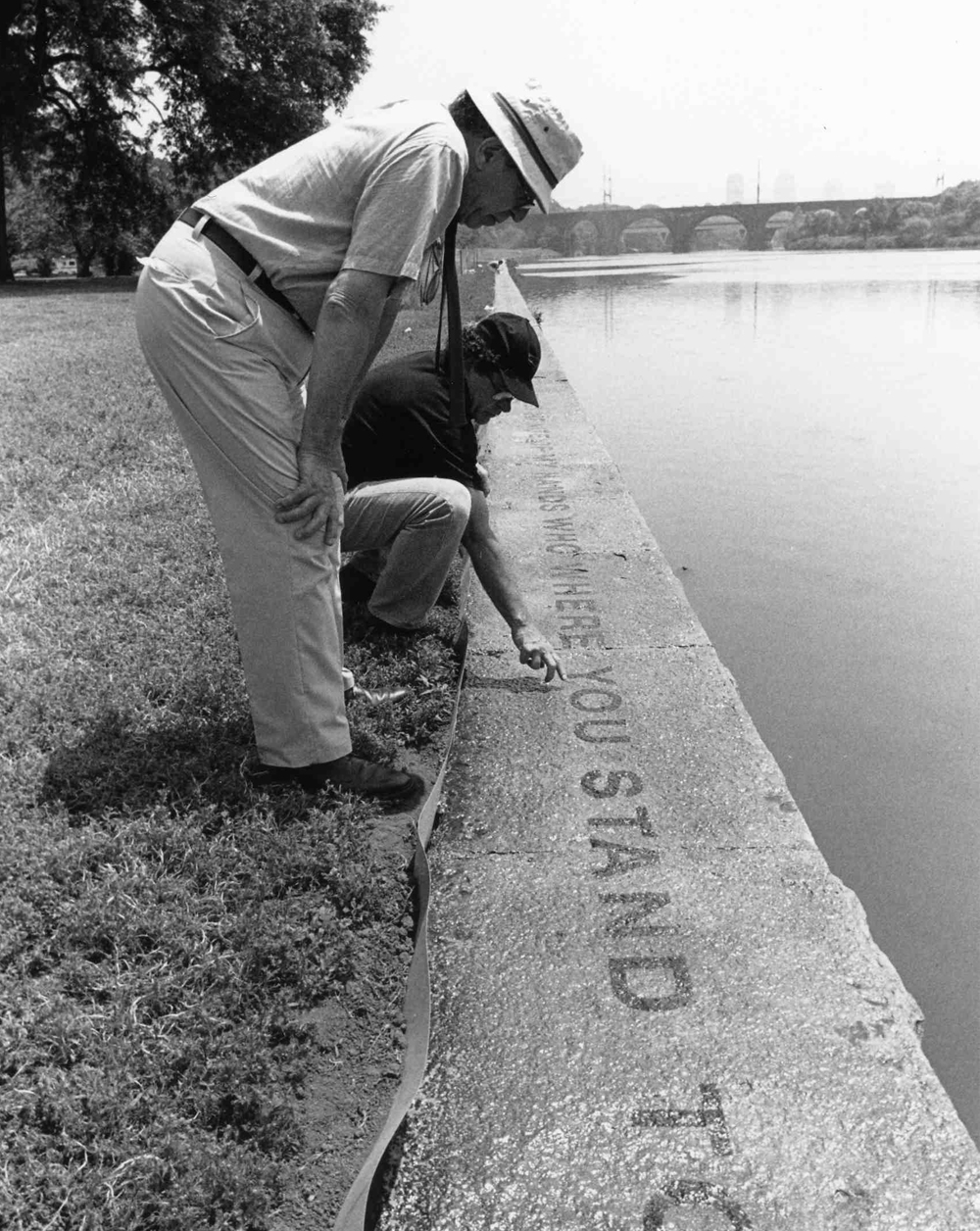
The artwork was installed in 1991, and begins near Frederic Remington’s Cowboy and ends near Carl Milles’ Playing Angels. The 1,125-foot line of text, painted on top of the stone retaining wall that separates the Schuylkill River and the grass bank of Kelly Drive, was applied with a series of polyurethane coatings so that the words “emerge” from the stone. Depending upon the variable light and the angle of the observer, the letterforms appear and disappear. The center of the text is marked by the word “RIVER.”
Sleeping Woman is composed without punctuation, much like ancient Greek performance texts. Berg, who wrote the text specifically in response to its site in Fairmount Park, saw the line as “a long breath of speech,” and Chimes described it as a “legible whisper; its surface will mirror the weather…the line will be part of the landscape.” Unlike a book or poem, the line speaks to the reader from the ground. Berg gives voice to many authors and sources (in order of appearance in the line) including: Sophocles from Oedipus Tyrannus, Thoreau from Walden, Buson’s haiku, Yeats’s letters, various fragments from Sappho, poems by Emily Dickinson and Wallace Stevens, Buber’s Tales from the Hassidic Masters, Pound’s Cantos, and calligraphy from the Japanese Teahouse in the Philadelphia Museum of Art. Berg and Chimes requested that the full Sleeping Woman text not be published, so that only by experiencing the work along the river can it be enjoyed.
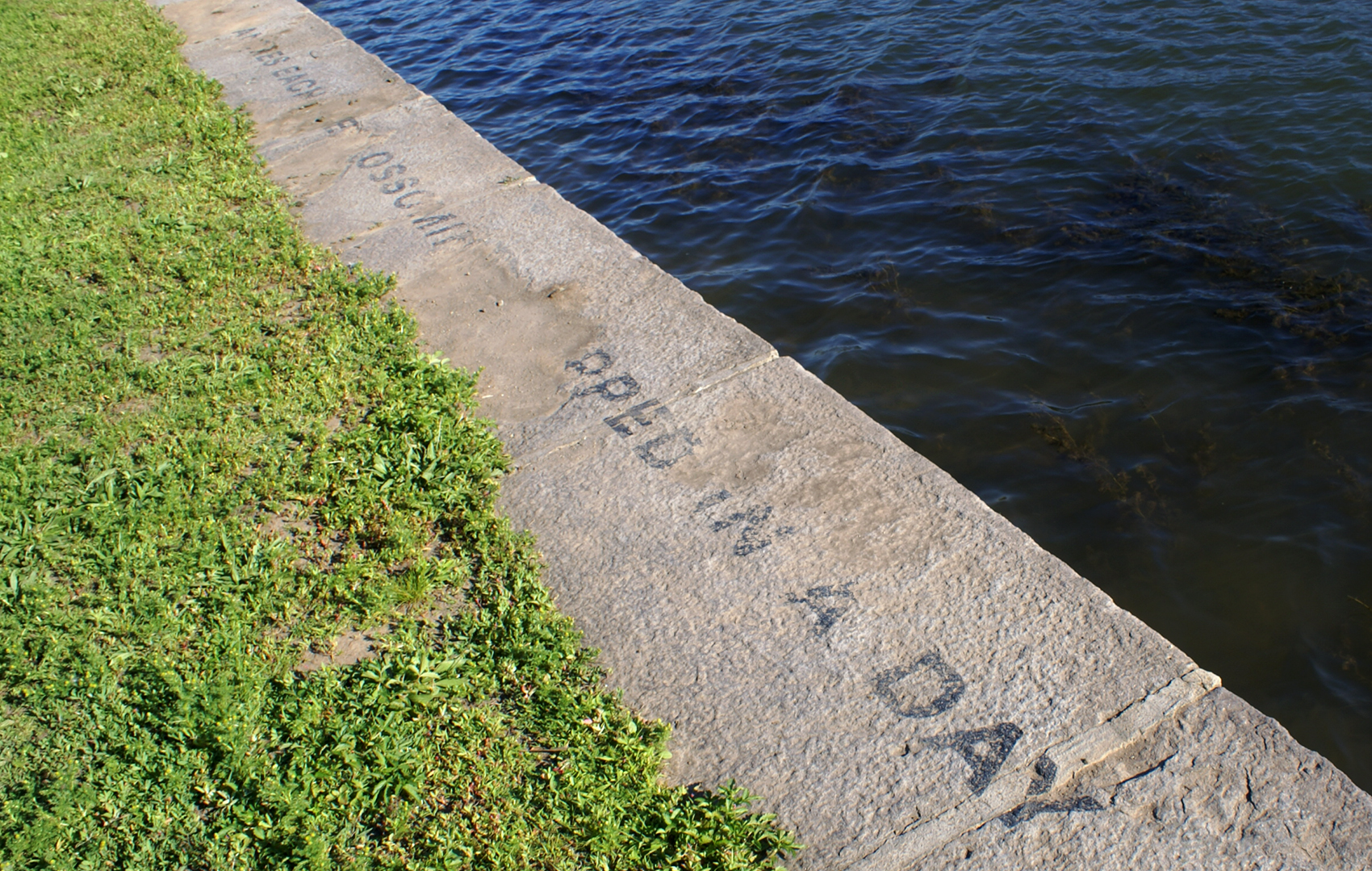
A few months after the project was completed, a 200-foot section of the wall unexpectedly sank into the river. Berg observed that the collapse embodied a major theme of the text: the power of nature and the transformation of life. In a 2010 interview with Berg and Chimes, Berg reveals that the artists wanted Sleeping Woman to be something ephemeral, as in nature: “If you just observe nature, even in a casual way, you can see how impermanent things are. Right? They die, they grow, because it’s everybody’s fate. So we thought we would try to limit its lifetime, so to speak, and in that sense, make it a part of nature. When we commissioned the company in the Midwest to create a glaze for the letters, we said we don’t want it to last more than 15 years. And the thing is still out there. But I’m glad it’s there, I am.”
Adapted from Public Art in Philadelphia by Penny Balkin Bach (Temple University Press, Philadelphia, 1992).
Voices heard in the Museum Without Walls: AUDIO program: Stephen Berg (1934-2014) was the founder of The American Poetry Review and the American Poetry Center, and taught at the University of the Arts. Tom Chimes (1921-2009), a painter and artist from Philadelphia, collaborated with longtime friend and poet Stephen Berg to create Sleeping Woman. Elizabeth Scanlon is a poet and an editor of The American Poetry Review. | Segment Producer: Ann Heppermann
Museum Without Walls: AUDIO is the Association for Public Art’s award-winning audio program for Philadelphia’s outdoor sculpture. Available for free by phone, mobile app, or online, the program features more than 150 voices from all walks of life – artists, educators, civic leaders, historians, and those with personal connections to the artworks.
RESOURCES:
- Stephen Berg, 79, poet, teacher, editor (Philadelphia Inquirer)
- An artist [Tom Chimes] whose work spanned decades, styles (Philadelphia Inquirer)
- How to Request Images
This artwork is part of the Along Kelly Drive tour

